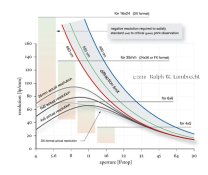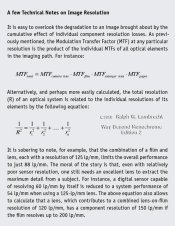What is the typical resolution of 35 mm lenses in lp/mm? Will the lenses ever be the limiting factor or is it 'just' the film? Is there any significant difference between modern lenses and older? Is there any differences between really expensive leica lenses and more modestly priced older SLR lenses (think m42, older FDs and AIs).
No easy, simple, comprehensive or "right" answer to all that...
I'll skip the lines/mm question... Just that lenses can be (and often are) the limiting factor.
Modern/older:
"On average", lenses have gotten better, though a usual bugbear is just what is meant by "better"?
I'll use "better" as meaning subjectively sharper, more flare resistant, less disortion and vignetting.
That doesn't mean all newer lenses are better than older ones, often it is quite the opposite!
In some brands, the newer lenses tend to be (or might always be) "better" than their older equivalents. Other brands have cut costs, so that often their newer lenses aren't as good as the older versions.
A number of manufacturers have concentrated on zooms, letting the quality of their prime lenses decline.
Anyway, I have some Soviet copies of 1930's Zeiss lenses which give first rate results. I've had (and quickly gotten rid of) some modern lenses which were simply awful.
As I said, no easy answer... ;-)
Leica lenses.
More recent Leica lenses are really hard to beat. A few of other manufacturer's lenses might (and they'll probablly be just as expensive), but in general that is true.
Older Leica lenses, contemporary with M42, Canon FD and Nikon AI lenses, you really have to look at on a case by case basis.
On average, Leica will still be "better", but several Leica lenses can certainly be found which are no better or worse than their cheaper equivalents. A few will be absolutely stellar, even by current standards.
Also, while my Leica lenses are generally and objectively technically "better", I often like the look of my Zeiss lenses more.
Again, the trick is choosing wisely.
And blanket statements don't work!!




 )
)

